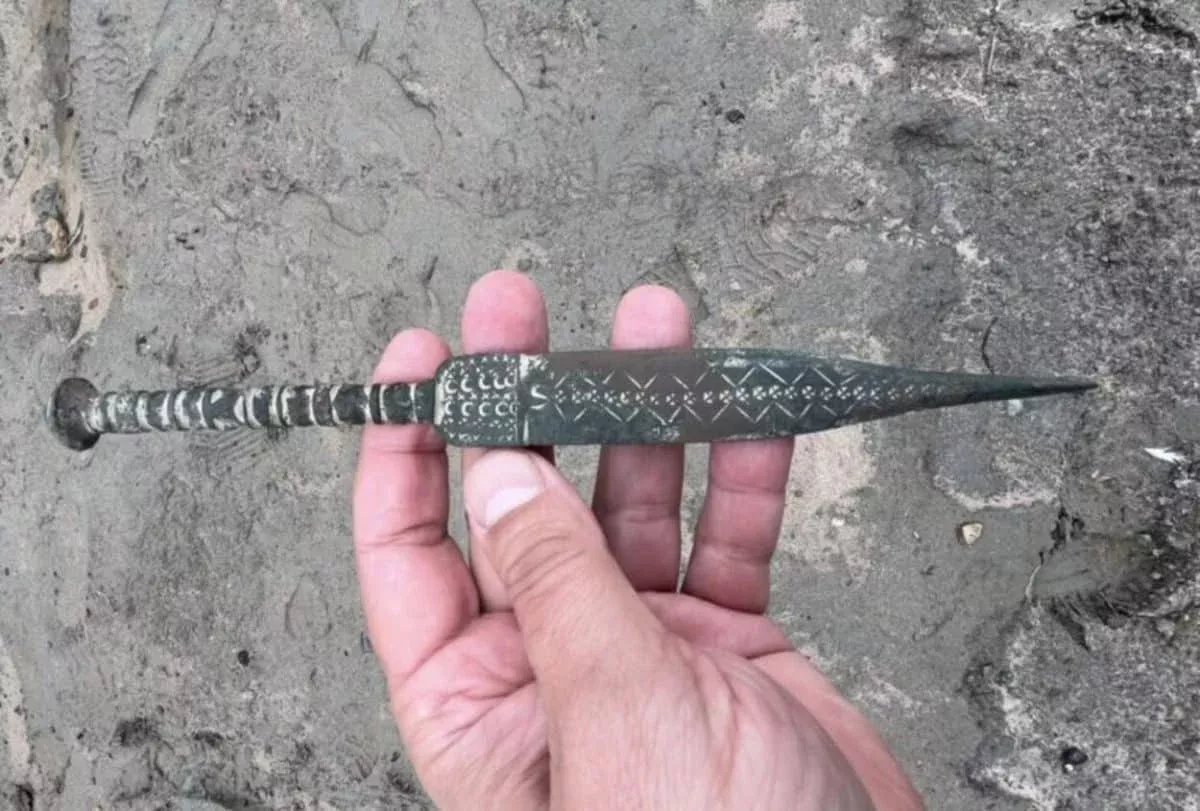
Many historical artifacts from various periods are found along the Baltic Sea coast of Poland. This was reported by Zamin.uz.
Recently, local scientists discovered a rare item of great historical significance, according to the Museum of the History of the Kamieńska Land. Due to a strong storm near the coastal area close to the city of Kamen, land slopes eroded, revealing an ancient metal object that had been preserved underground for approximately three thousand years.
This item dates back to 800–450 BC and was identified as a crescent-shaped dagger decorated with geometric patterns. The find was made by history enthusiasts Yatsek Ukovskiy and Katajina Gerdjik while walking along the shore after the storm.
They noticed part of the metal object protruding from the clay layer and immediately informed the museum director, Gjegoj Kurka. The dagger is 24 centimeters long, and it is emphasized that not only its decorations but also the quality of its craftsmanship are of a very high standard.
The handle is sharp and demonstrates artistic skill. According to the museum director, this item is one of the most unique Iron Age artifacts found in the territory of Poland.
According to Ancient Origins, the shape and patterns of the dagger suggest it was used not for combat but for religious or ceremonial purposes. The absence of rich decorations and battle marks further supports this assumption.
At the same time, its sturdy and balanced structure has led some researchers to speculate that it might have belonged to a high-ranking warrior. Museum director Gjegoj Kurka expressed his opinion about the dagger’s origin: “This item was probably made in one of the metalworking centers of that era – in present-day Italy, Austria, or the Balkan region.
Later, it might have been brought north to Poland via ancient trade routes.” Currently, the dagger is preserved under special conditions, and upcoming laboratory analyses will precisely determine its composition, age, and function.
Historians regard this find as important evidence for the Iron Age culture of Europe. Once again, the Baltic coast has vividly revealed ancient traces of human civilization.
These discoveries not only add new information to historical research but also play a significant role in studying ancient culture and trade relations.







